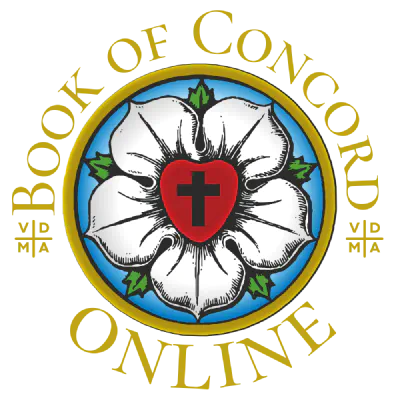Comprehensive Summary, Rule and Norm
Comprehensive Summary, Rule and Norm According to which all dogmas should be judged, and the erroneous teachings [controversies]that have occurred should be decided and explained in a Christian way.
1 1. We believe, teach, and confess that the sole rule and standard according to which all dogmas together with [all] teachers should be estimated and judged are the prophetic and apostolic Scriptures of the Old and of the New Testament alone, as it is written Ps. 119:105: Thy Word is a lamp unto my feet and a light unto my path. And St. Paul: Though an angel from heaven preach any other gospel unto you, let him be accursed, Gal. 1:8.
2 Other writings, however, of ancient or modern teachers, whatever name they bear, must not be regarded as equal to the Holy Scriptures, but all of them together be subjected to them, and should not be received otherwise or further than as witnesses, [which are to show] in what manner after the time of the apostles, and at what places, this [pure] doctrine of the prophets and apostles was preserved.
3 2. And because directly after the times of the apostles, and even while they were still living, false teachers and heretics arose, and symbols, i. e., brief, succinct [categorical] confessions, were composed against them in the early Church, which were regarded as the unanimous, universal Christian faith and confession of the orthodox and true Church, namely, the Apostles' Creed, the Nicene Creed, and the Athanasian Creed, we pledge ourselves to them, and hereby reject all heresies and dogmas which, contrary to them, have been introduced into the Church of God.
4 3. As to the schisms in matters of faith, however, which have occurred in our time, we regard as the unanimous consensus and declaration of our Christian faith and confession, especially against the Papacy and its false worship, idolatry, superstition, and against other sects, as the symbol of our time, the First, Unaltered Augsburg Confession, delivered to the Emperor Charles V at Augsburg in the year 1530, in the great Diet, together with its Apology, and the Articles composed at Smalcald in the year 1537, and subscribed at that time by the chief theologians.
5 And because such matters concern also the laity and the salvation of their souls, we also confess the Small and Large Catechisms of Dr. Luther, as they are included in Luther’s works, as the Bible of the laity, wherein everything is comprised which is treated at greater length in Holy Scripture, and is necessary for a Christian man to know for his salvation.
6 To this direction, as above announced, all doctrines are to be conformed, and what is, contrary thereto is to be rejected and condemned, as opposed to the unanimous declaration of our faith.
7 In this way the distinction between the Holy Scriptures of the Old and of the New Testament and all other writings is preserved, and the Holy Scriptures alone remain the only judge, rule, and standard, according to which, as the only test-stone, all dogmas shall and must be discerned and judged, as to whether they are good or evil, right or wrong.
8 But the other symbols and writings cited are not judges, as are the Holy Scriptures, but only a testimony and declaration of the faith, as to how at any time the Holy Scriptures have been understood and explained in the articles in controversy in the Church of God by those then living, and how the opposite dogma was rejected and condemned [by what arguments the dogmas conflicting with the Holy Scripture were rejected and condemned].
